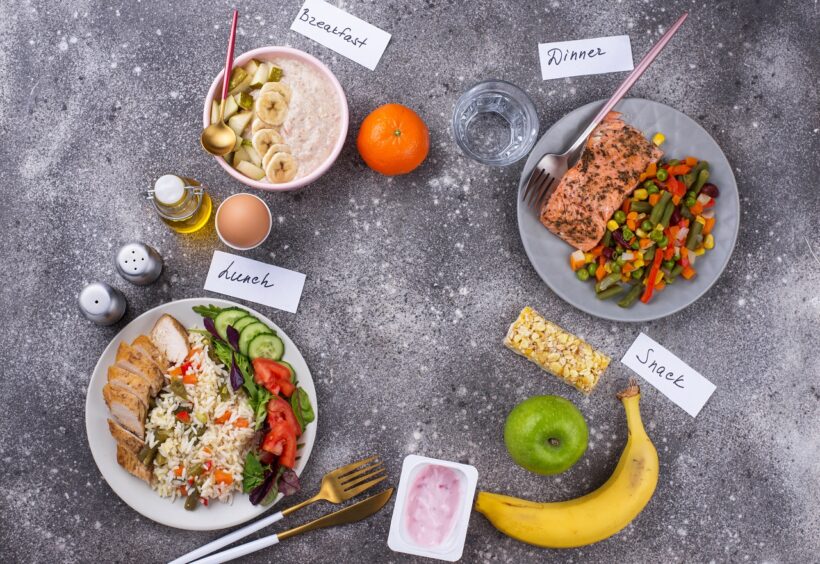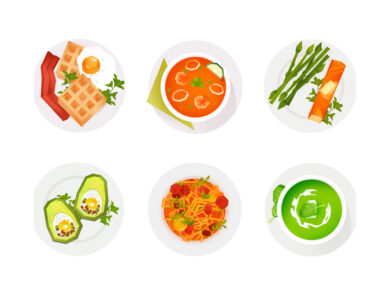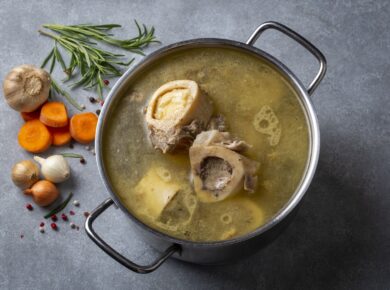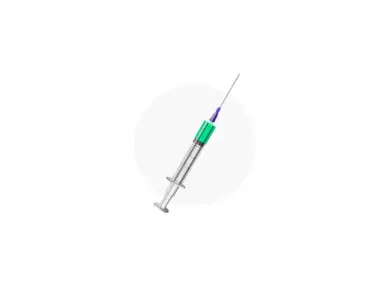A bland diet can be a lifesaver for those dealing with digestive issues like diarrhea, nausea, or vomiting. This type of diet focuses on gentle, easy-to-digest foods that won’t irritate your stomach. Foods that are soft and low in fiber help calm your digestive system, making them ideal for recovery from conditions like gastroenteritis, food poisoning, or after surgery.
When you follow a bland diet, you typically eat foods like bananas, rice, applesauce, and toast. These foods are less likely to upset your stomach and are also recommended for those with peptic ulcers or for managing stress-related digestive issues. Avoid spicy, fried, or fatty foods, as they can worsen symptoms and delay the healing process.
For those with peptic ulcers, a bland diet coupled with lifestyle changes can help lessen symptoms. It’s important to eat small, frequent meals and stay hydrated. Memorial Sloan Kettering Cancer Center suggests that a bland or BRAT diet can also help when dealing with a loss of appetite or changes in taste, ensuring you get enough nutrition while your body heals.
Benefits of a Bland Diet
A bland diet can be very helpful for managing symptoms of various digestive issues. It is particularly useful if you are dealing with ulcers, gastroenteritis, or diarrhea.
A bland diet consists of foods that are low in fiber and fat. These foods are easy to digest and gentle on your stomach.
The Benefits:
Gentle on the Stomach: Foods like bananas, rice, applesauce, and toast (often called the BRAT diet) are easy to digest and won’t irritate your stomach.
Reduces Gastric Acid: This diet can help reduce the production of gastric acid, which is beneficial if you have ulcers or gastroenteritis.
Soothes Diarrhea Symptoms: A bland diet can firm up your stools and reduce the frequency and urgency of diarrhea.
Less Gas Production: By avoiding foods that produce gas like fatty meats and beans, you reduce bloating and discomfort.
The Role of Protein in a Bland Diet
It’s key to have enough protein in a bland diet to keep muscles strong and healthy. You must pick the right protein sources and cook them gently. This helps your digestive system stay calm.
Lean Protein Sources
For a bland diet, it’s best to choose proteins that are low in fat. Chicken and turkey are great because they’re rich in protein but don’t add fat that might upset your stomach. Fish offers protein and good fats like omega-3s. Eggs and tofu can be used in many meals easily and don’t stress your stomach.
Preparing Meat Safely
How you cook your proteins is as important as what you pick. Use low-fat ways to cook to keep your stomach happy. Steaming, baking, or grilling are good while frying is not. Adding simple herbs and spices makes food tasty without upsetting your stomach. Cooking safely lets you enjoy the goodness of protein without hurting your digestion.
Foods to Include
When following a bland diet, it is important to choose foods that are gentle on your stomach and do not irritate your digestive system. This includes lean proteins, simple carbohydrates, mild fruits and vegetables, and certain dairy products.
Proteins
Cooked eggs, especially scrambled or hard-boiled, provide a gentle source of protein that is easy to digest. Fish, such as baked or steamed options, are also good. Poultry without skin, like boiled or baked chicken and turkey, is mild and tender. Tofu is another excellent protein that is gentle on the stomach and can be easily incorporated into many dishes.
Avoid frying these proteins and stick to simple cooking methods like baking, boiling, and steaming.
Carbohydrates
White rice is a staple in a bland diet due to its simple and easy-to-digest nature. Pasta made from refined flour, without heavy sauces, is another good choice. Oatmeal and cream of wheat provide soft, warm options that are gentle on the stomach. Plain potatoes, especially boiled or mashed without skins, are mild and filling.
Be sure to avoid whole grains and high-fiber options as these can be harder on your digestive system.
Fruits and Vegetables
Bananas and applesauce are excellent fruit choices because they are soft and low in fiber. Cooked or canned fruits without skins or seeds, and mild vegetables like carrots, green beans, and squash are also suitable when cooked until soft. Avoid raw vegetables, as they can be hard to digest and may irritate the stomach.
Choose fruits and vegetables that are low-acid and prepare them in the gentlest way possible.
Dairy
Low-fat milk and yogurt are gentle on the stomach and provide needed calcium. Pudding and custard can also be included, offering a soothing texture that is easy to digest. Be cautious with full-fat dairy and strong cheeses as they may aggravate sensitive stomachs.
Stick to products that have lower fat content and avoid adding strong flavors or spices.
Foods to Avoid
When following a bland diet, it’s important to steer clear of certain foods that can irritate your digestive system. Pay special attention to fats and oils as well as dietary fiber, as these can significantly impact your gut health.
Fats and Oils
Avoid consuming fried foods, as they are high in fat and can cause digestive issues. Fried chicken, fish, and other fried items should be off your menu. Stay away from fatty dairy like cream, full-fat milk, and products like high-fat ice cream.
Another group to avoid includes strong cheeses, such as bleu or Roquefort. These cheeses are not only high in fat but can also be strong in flavor, which might upset your stomach. Nuts and seeds can also be problematic due to their fat content and potential to cause irritation.
What to avoid:
- Fried chicken and fish
- Full-fat dairy products
- Strong cheeses
- Nuts and seeds
Dietary Fiber
Fiber-rich foods can be rough on your digestive system. Skip whole-grain bread and cereals as they contain high levels of dietary fiber. Raw vegetables, while generally healthy, can be hard to digest and should be avoided.
Beans and lentils are also high in fiber and can generate gas, leading to discomfort. Instead, go for well-cooked, skinless, seedless vegetables like potatoes and squash. Be cautious with dried fruits too, as they contain significant fiber and can irritate your gut.
What to avoid:
- Whole-grain bread and cereals
- Raw vegetables
- Beans and lentils
- Dried fruits
By staying away from these fatty and high-fiber foods, you can help ensure that your bland diet is more effective and easier on your digestive system. For more information, you can check out details about avoiding fatty meats, beans, and fish or understanding why whole grains and raw vegetables are not recommended.
Tips for Following a Bland Diet
A bland diet can help with digestive problems and boost stomach health. Here are some key ways to stick to this diet well.
Eat Smaller, Frequent Meals
Eating small meals often throughout the day is a big tip for the bland diet. It helps your stomach not to get too full and cuts the risk of tummy troubles. Work on having five to six little meals over the typical three big ones.
Avoid Eating Late at Night
Not eating late at night is crucial, especially if you have gastritis or acid reflux. Eating too close to bedtime can make acid reflux worse. Make sure to eat your last meal two to three hours before you go to sleep.
Chew Food Slowly and Thoroughly
It’s vital to chew your food well and slowly for better digestion. Slow chewing helps break down the food, easing the digestive process. This method is good for a gastric-friendly diet as it lessens stomach lining irritation.
Save Pin to Your Favorite Pinterest Board
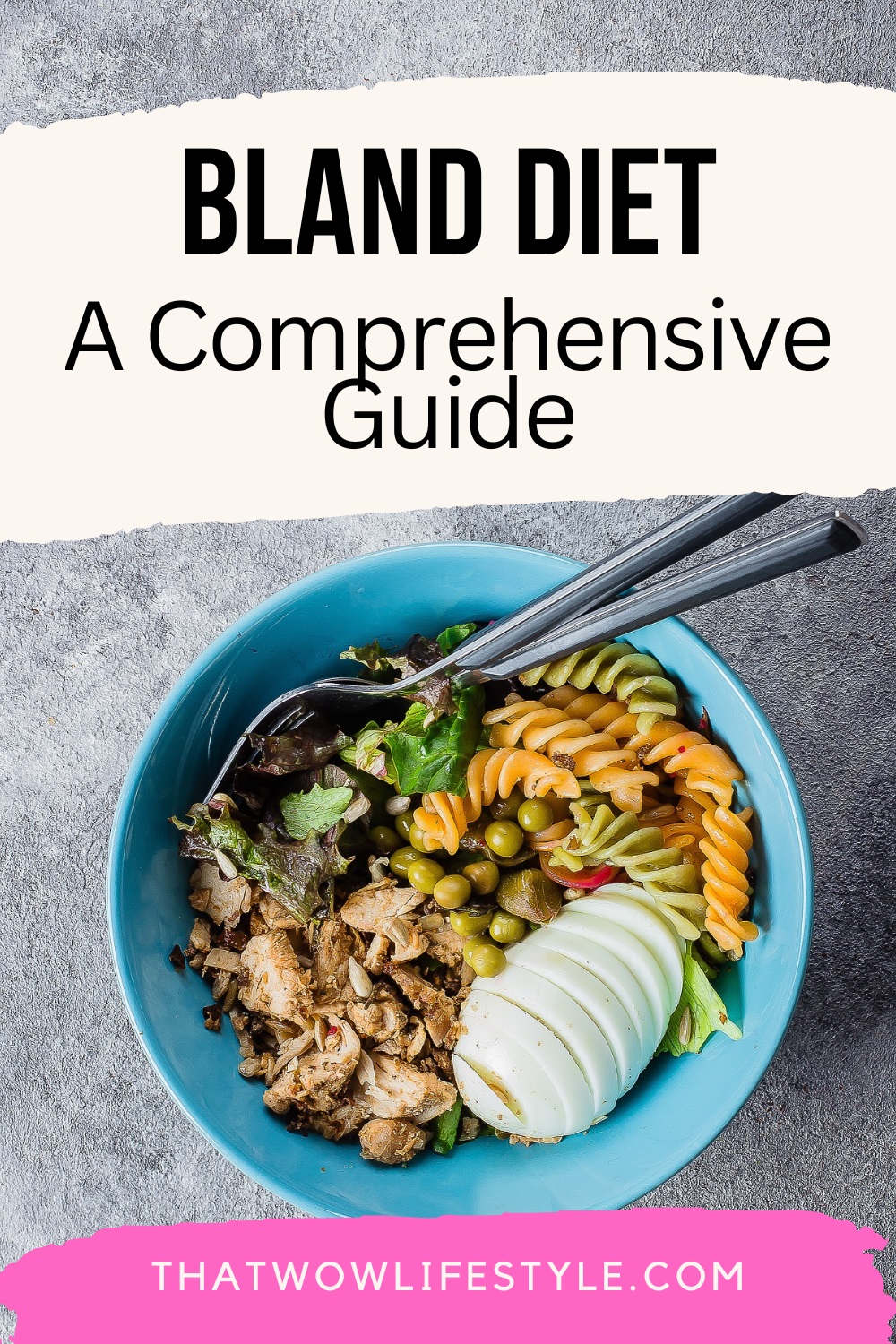
What to Expect When Starting a Bland Diet
Starting a bland diet brings challenges. You might feel hungry due to smaller meal sizes. Cravings for your favorite foods may appear.
This period of adjustment is common. Soon, your body will get used to the new eating habits.
Initial Symptoms
At first, you may feel a bit uncomfortable. This happens if you ate a lot of spicy or fibrous foods before. You might deal with slight constipation or find the food choices boring.
But these issues usually go away. Your stomach starts to feel better. This leads to less irritation and easier digestion.
As time goes on, stomach problems like heartburn and nausea should lessen. Your diet becomes simpler, and your digestion improves. This makes you feel better overall.
Eventually, you’ll get used to the diet and might even like it. This makes managing health issues easier with a bland diet.
Safe Preparation and Cooking
Making safe and healthy meals on a bland diet involves paying close attention to both cooking methods and food handling practices. Proper preparation can help you avoid irritation and support your digestive health.
Cooking Methods
When following a bland diet, it is essential to choose gentle cooking methods that make food easier to digest. Steaming, baking, and boiling are some of the most recommended methods. These techniques help retain nutrients in foods while avoiding added fats or spices that can irritate your stomach.
Steamed vegetables such as carrots and potatoes are excellent choices. Baked chicken without the skin is a good protein source. Broths and soups made with plain ingredients can soothe your digestive system. Avoid frying or grilling with high heat, which can make foods harder to digest and more likely to cause discomfort.
Food Handling
Proper food handling is crucial to prevent contamination and ensure food safety. Always wash your hands before and after handling food. Keep raw meats separate from other foods to prevent cross-contamination. Use separate cutting boards for raw meat and vegetables.
Store perishable items in the refrigerator immediately after purchasing. When cooking, make sure meats are thoroughly cooked to safe internal temperatures. For example, chicken should reach an internal temperature of 165°F.
Use clean utensils and cookware, and avoid using the same tools for raw and cooked foods without washing them thoroughly. These practices help ensure the food you prepare is both safe and suitable for a bland diet.
Managing Portion Size and Frequency
When following a bland diet, managing portion size and frequency is key. Eating smaller meals more often can help you digest food more easily.
Aim for five to six small meals per day. This prevents your stomach from becoming overly full and helps with digestive comfort.
Use visual cues to guide portion sizes. For instance:
- Fruit: One serving equals a tennis ball (1 medium fruit or 1/2 cup of chopped fruit).
- Vegetables: One serving is equivalent to one or two baseballs.
Stick to low-fat and low-fiber foods. These can be easier to digest and are less likely to irritate your stomach.
Examples of low-fat and low-fiber foods include:
- White rice
- Boiled potatoes
- Skinless chicken
- Bananas
When managing portion sizes, using smaller plates and bowls can make portions appear larger and help you control your intake.
For drinks, choose water, decaffeinated tea, or other low-fat beverages. Avoid fizzy drinks or anything with caffeine as they can upset your stomach.
By breaking meals into smaller portions and focusing on low-fat, low-fiber foods, you can follow the bland diet more effectively while keeping your digestion in check.
Special Considerations
A bland diet can help manage certain medical conditions and aid recovery after surgery. It is essential to understand how this diet applies to different scenarios, such as post-surgery care and managing digestive disorders.
Post-Surgery Care
After surgery, especially involving the digestive tract, your doctor may recommend a bland diet. This diet helps minimize irritation and aids healing. Low-fat dairy products, such as skim milk and low-fat yogurt, are beneficial. Plain cereals like oatmeal provide gentle nourishment without straining your system.
Avoid spicy foods, fried items, and fatty meats as they can worsen inflammation and delay healing. Instead, opt for boiled or steamed rice, plain potatoes, and lean proteins like tofu or chicken breast without skin.
Maintaining hydration is crucial, so drink plenty of water and clear broths. Following these guidelines can help speed up recovery and reduce discomfort during the healing process.
Digestive Disorders
When dealing with digestive disorders such as GERD, nausea, or gastroenteritis, a bland diet can be comforting. For GERD, avoid foods that trigger acid reflux, like citrus fruits, chocolate, and caffeine. Instead, consume low-acid fruits like bananas and applesauce.
Nausea and vomiting can be managed by eating small, frequent meals of easy-to-digest foods like crackers, toast, and ripe bananas. Steer clear of greasy, heavy foods, and carbonated drinks which can aggravate symptoms.
For gastroenteritis, fluid intake is vital. Electrolyte solutions, herbal teas, and water are recommended. Consuming bland starches like rice or plain pasta can help calm your stomach. These dietary choices can help manage symptoms and support your digestive health.
Potential Risks and Challenges
A bland diet can be vital for managing certain digestive issues, but there are important considerations. These include potential nutritional deficiencies and the impact of long-term use.
Nutritional Deficiencies
A bland diet often limits fiber, spices, and certain sources of fats. This can lead to lower intake of essential nutrients. For instance, cutting out high-fiber foods like whole grains, fruits, and vegetables might lead to deficiencies in vitamins like A, C, and K. You may also miss out on minerals such as potassium and magnesium.
Limited diet variety can affect your overall health. A lack of nutrient-rich foods may delay recovery from illness or surgery because your body needs a wide range of nutrients to heal and function properly.
You should work with a healthcare provider to ensure you’re getting enough vitamins and minerals through supplements if necessary. Maintaining balanced nutrition is crucial even on a bland diet to avoid long-term health issues.
Long-Term Use
Using a bland diet for extended periods can present challenges. This type of diet is usually not intended for prolonged use. Long-term adherence may make it difficult to reintroduce more diverse foods without digestive issues.
Continual restriction can affect nutrient absorption. Your gastrointestinal system may adapt to processing fewer fiber-rich foods, making it harder to digest them when you eventually reintroduce them. This can lead to discomfort and other digestive problems.
Balancing your diet gradually over time helps avoid these pitfalls. Consider adding new foods slowly and monitoring your body’s response. Always consult with a healthcare professional before making significant changes to your diet, especially if you have ongoing health conditions.
Meal Planning and Recipes
Creating a meal plan for a bland diet involves selecting foods that are easy on the digestive system. In this section, you will find various recipes and suggestions for breakfast, lunch, dinner, and snacks that can help support your digestive health.
Breakfast Ideas
Start your day with simple and gentle foods. Oatmeal made with water or a low-fat milk option is a great start. You can add a bit of honey or a banana to add flavor without causing discomfort.
Another option is toast with a light spread of butter or jam. Pair it with a boiled egg or some Greek yogurt to add protein to your meal.
If you prefer something warm, try cream of wheat. It’s easy to digest and can be flavored with a small amount of cinnamon or apple puree.
Lunch Suggestions
For lunch, consider dishes like chicken noodle soup. It’s light, easy to digest, and provides hydration. Another simple dish is a turkey sandwich on white bread with no extra condiments.
Baked chicken breast with a side of steamed zucchini or carrots is another excellent choice. These vegetables are cooked until tender, making them easy to digest.
Pasta with a light drizzle of olive oil and a sprinkle of Parmesan cheese can also be part of your lunch. Add some boiled spinach for a nutrient boost that’s still easy on the stomach.
Dinner Recipes
For dinner, broth-based soups like vegetable broth soup are recommended. Include small, soft pieces of carrots, potatoes, and chicken for added nutrients.
Baked white fish with a side of steamed rice is a good choice. You can add a small portion of boiled green beans or pumpkin to round out the meal.
Mashed potatoes paired with grilled chicken breast and a side of steamed asparagus provide a low-fiber, high-protein meal. Use minimal seasoning to avoid stomach irritation.
Snacks and Desserts
For snacks, plain crackers or rice cakes with a bit of cottage cheese are useful options. They are light and don’t add much strain on the digestive system.
Applesauce or small portions of banana can serve as a sweet, gentle snack. Additionally, try yogurt without added sugars for a creamy snack rich in probiotics.
For dessert, a cup of gelatin or vanilla pudding is a safe choice. Both are soft, easy to digest, and bring some variety to your diet without causing irritation.
Bland Diet Guidelines for Long-Term Success
Switching to a long-term bland diet requires careful steps. This keeps your digestive system happy and balanced.
Reintroducing Foods Gradually
For success with a bland diet, introduce foods slowly. Start with tiny amounts of one new food. Watch how your body reacts. This helps identify foods that cause upset. It helps you adjust your diet for a happy gut.
- Introduce only one new food every few days.
- Start with soft, easy-to-digest options before progressing to more varied items.
- Keep track of any adverse reactions in a food diary.
Monitoring Digestive Reactions
Keep an eye on your digestive health when on this diet. Note how you respond to different foods. This allows you to tweak your diet to avoid trouble. Your goal is to keep your digestive system comfortable.
- Note symptoms such as bloating, gas, or discomfort after consuming new foods.
- Adjust your diet based on these observations to prevent chronic irritation.
- Consult with a healthcare provider regularly to ensure your nutritional needs are met.
Mix careful food introduction with close health watch. This combination will help you form a nutritionally sound and stomach-friendly bland diet.
Bland Diet for Nausea and Vomiting
When you feel nauseous or need to vomit, a bland diet helps a lot. It includes foods that are gentle and don’t upset your stomach. These foods are easy to digest and soft on your digestive tract.
Here are some food options for vomiting and bland diet for nausea:
- Plain crackers: They’re simple and help take in stomach acids.
- Toast: White bread is better, as it’s gentler on your stomach.
- Plain cereals: Choose ones that are not spicy and low in fiber, like cream of wheat or oatmeal.
- Boiled potatoes: They’re soft and easy on your stomach.
- Applesauce: It’s mild and can help calm your nausea.
These foods are chosen because they are mild and easy to eat when you feel sick. Eating these can make you feel better by reducing how often and how much you vomit.
Hydration on a Bland Diet
Maintaining proper hydration is key on a bland diet. Choose drinks wisely to stay hydrated without any stomach upset.
Suitable Beverages
For bland diet beverages, weak tea and diluted juices are best. They’re easy on the stomach and help keep you hydrated. Avoid drinks with caffeine and alcohol since they can upset your stomach.
Drink Fluids Slowly
It’s important to drink fluids slowly all day. This helps avoid too much pressure on your stomach. Sipping slowly is better than drinking fast for your body.
Bland Diet for Children
When your child has an upset stomach or digestive issues, a bland diet can be helpful.
Bland foods are easy to digest and can help give their stomach a rest. These foods are usually low in fat and fiber.
A classic option is the BRAT diet, which stands for Bananas, Rice, Applesauce, and Toast. These foods are gentle on the stomach and help firm stools.
Including foods like plain rice and boiled potatoes can also provide necessary carbs without upsetting the stomach.
Milk and yogurt can be good options too. They are gentle on the stomach and can be soothing, but avoid if lactose causes issues for your child.
Breads are another staple. Opt for plain white bread or whole grain bread if it’s well-tolerated.
Here’s a sample meal plan:
| Meal | Food |
|---|---|
| Breakfast | Toast with a banana |
| Lunch | Plain rice with boiled chicken |
| Snack | Applesauce |
| Dinner | Mashed potatoes with steamed carrots |
Stick to three evenly spaced meals per day to avoid overloading your child’s stomach.
Given the delicate nature of their digestive system, it’s crucial to avoid foods that are spicy, fried, or high in fiber during this period.
Opt for simple, plain foods that are easy to digest and offer comfort and nutrition.
Considerations for Beverages
When following a bland diet, choosing the right beverages is crucial for your digestive comfort.
Water is the best choice as it is gentle on your stomach and keeps you hydrated.
Herbal teas such as chamomile or ginger tea are soothing and caffeine-free. They can help calm your stomach.
Avoid caffeinated beverages like regular coffee, tea, and soda as they can irritate your digestive system.
Select vegetable juices that are low in acid. For example, carrot juice or spinach juice. Avoid tomato juice because of its acidity.
Milk and dairy products should be limited to low-fat or non-fat options. Full-fat milk can be heavy on your stomach.
Here is a quick table to summarize the choices:
| Beverages | Recommended Options | To Avoid |
|---|---|---|
| Water | Spring water, purified water | – |
| Herbal Teas | Chamomile, ginger | Regular tea, green tea |
| Vegetable Juices | Carrot juice, spinach juice | Tomato juice |
| Dairy Products | Low-fat milk, non-fat yogurt | Full-fat milk |
| Caffeine-Free Drinks | Decaf coffee, caffeine-free sodas | Regular coffee, soda |
Keep these guidelines in mind to ensure you’re drinking choices that support your bland diet.
Consulting Healthcare Professionals
It’s important to consult with healthcare professionals before starting a bland diet. A dietitian can help tailor the diet to your specific needs. They can ensure the right balance of nutrients, especially if you have underlying conditions.
If you experience nausea or vomiting, a healthcare provider can guide you on how to adjust your diet. Sometimes these symptoms indicate a more serious issue with your stomach or gut.
For postsurgical patients, a bland diet can aid in recovery. Medical advice is crucial to avoid complications and manage your stress levels. Specific modifications might be required depending on the surgery type.
Conditions a Bland Diet May Help:
- Gastritis
- Acid Reflux
- IBS
Always discuss dietary changes with your doctor. They can provide personalized advice to suit your health goals. You might need to avoid certain foods or incorporate others.
Foods to Include:
- Broth
- Smooth nut butters
- Skinless, seedless vegetables
- Plant-based milk alternatives
Foods to Avoid:
- Spicy foods
- Fried foods
- Raw vegetables
For a comprehensive list and meal plan, consider resources like this bland diet food list.
Frequently Asked Questions
A bland diet is often recommended for those with digestive issues. It includes specific foods that are easy to digest while avoiding those that might irritate the stomach or intestines.
What foods are recommended for managing gastritis on a bland diet?
For managing gastritis, you should choose easy-to-digest foods. Recommended options include bananas, applesauce, white rice, plain toast, and boiled potatoes. Avoid spicy or high-fat foods to prevent irritation.
Which foods should be avoided to maintain a bland diet?
You should avoid fatty meats, full-fat dairy products, strong cheeses like bleu or Roquefort, raw vegetables, fresh berries, citrus fruits, and dried fruit. These foods can irritate your digestive system and are hard to digest.
What are some bland diet options for dealing with diarrhea?
When dealing with diarrhea, stick to the BRAT diet: bananas, rice, applesauce, and toast. You can also include oatmeal, boiled potatoes, and plain crackers. Avoid foods high in fiber, fat, and spices.
How can I create a balanced meal plan while following a bland diet?
To create a balanced meal plan on a bland diet, include lean proteins like skinless chicken, eggs, and tofu. Combine them with low-fiber carbohydrates such as white rice or pasta and cooked vegetables like carrots or squash. Drink plenty of water.
What breakfast options are suitable for a bland diet regimen?
Suitable breakfast options include plain cereals like oatmeal or cream of wheat, scrambled eggs, and toast with a small amount of butter or jelly. You can also have yogurt if it’s not too acidic or high in fat.
Is it possible to eat oatmeal when adhering to a bland diet?
Yes, you can eat oatmeal on a bland diet. It is a good option because it is easy to digest and low in fiber. Make sure to cook it thoroughly and avoid adding high-fat or sugary toppings.
